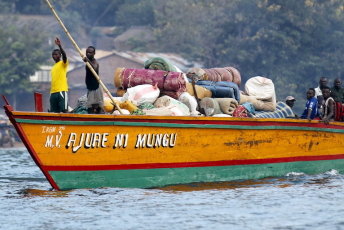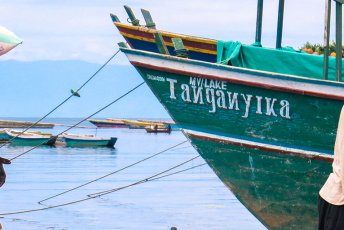Kenya and Ethiopia are still trying to streamline legal trade and curtail illicit trade in Moyale, a major town that straddles the border between the two countries.
The countries’ governments have over the past decade pursued joint infrastructure initiatives to develop Moyale’s joint town status and upgrade it to a combined city. The intention is to create a commonly administrated cross-border East African trade hub and establish the region surrounding it as an economic zone, according to a 2012 Special Status Agreement.
Two achievements have come out of this agreement. First is the 895 km highway corridor linking Kenya and Ethiopia, which places Moyale at the centre of the aspired-to trade hub and economic zone. The highway has eased cross-border traffic congestion between the two countries. The African Development Bank, which funded the corridor’s construction, projected that Kenya-Ethiopia trade would increase fivefold, from US$35 million to US$175m on completion in 2018.
However this ease of travel also makes the Moyale highway attractive to drug trade and a human trafficking and goods smuggling hotspot. Cosmetics, cement, second-hand clothes and manufactured goods like jerrycans, mattresses, blankets, soap, cooking oil and drinking juices are among the most smuggled goods through adjacent unmanned routes into and out of Kenya by traders seeking to evade tax. This deprives both governments of millions of dollars in customs revenue.
The second achievement is the 2018 commissioning of the first ever one-stop border post in Moyale to streamline and curtail illicit trade. However, the US$5m facility has remained largely unused as traders circumvent it and go through unofficial border points. Recent investigations in Moyale by the Kenya Revenue Authority (KRA) reveal that ‘panya [unofficial] routes’ are used to bring into Kenya contraband goods through the Sessi, Laga, Moyale and Forole crossings along the common border, KRA official Samuel Kariuki recently told the Kenya News Agency.
‘With a high volume of goods you can use other routes away from the border points that are not manned by Kenyan police officers,’ a resident told ENACT. Some 30 to 50 trucks export goods into Kenya from Ethiopia daily, but few of them pass through the one-stop border post, officials told ENACT.
For local traders it’s easier to access the Kenyan market with illicit goods from Ethiopia. It seems that deterrence measures put in place by Ethiopian authorities, including the burning of confiscated imports, are relatively more effective than Kenya’s.
Moyale residents say that food such as maize, beans, rice, sugar, cereals and khat are cheaper and more readily available in Ethiopia. This is because Kenyan farmlands are further from the border than Ethiopian farmlands, enabling easy access to these goods by Kenyans.
The highway also facilitates drug trafficking from Ethiopia into Kenya. Frequent seizures of marijuana from Ethiopia have exposed the magnitude and lucrative nature of this illicit trade. A recent report documents several seizures of thousands of marijuana consignments worth millions of shillings along the Kenya-Ethiopia highway.
Kenyan officials claim that the marijuana is smuggled from Shashamane in Ethiopia, where it is widely grown in large quantities and is of good quality. ‘It is possible that proceeds from drug trafficking fund criminal activities, including terrorism,’ Eastern Regional Commissioner Isaiah Nakoru of the Eastern Regional Development Implementation and Coordination Committee (RDICC) told ENACT.
Furthermore, residents claim that laxity and corruption among Kenyan security officials on the highway aid criminal networks. However Ethiopian officials, talking to ENACT, denied the smuggling of any Ethiopian narcotics into Kenya.
Apart from contraband smuggling, the porous common border also facilitates the south-bound movement of illegal migrants from Ethiopia through Kenya to South Africa on a 6 000 km road trip using the Trans-African Highway.
In a 2015 report, Kenya’s National Crime Research Centre described Moyale as a major recruitment centre for Kenyan agents and the main town in the country’s north, the epicentre for human trafficking. Smuggling cartels facilitate the illegal crossing of migrants into Kenya through Moyale, Dukana and Forolle in North Horr, Bute in Wajir North and Takaba in Mandera West. Illegal migrants come from Ethiopia, Eritrea and Somalia mostly with the help of corrupt Kenyan officials.
Criminal networks have orchestrated border violence in response to attempts by Kenyan authorities to tighten immigration and customs measures. The latest spate of violence in March was reported in the Kenyan media. In one incident a local Garre ethnic militia from the Ethiopian side of Moyale, believed to support human and contraband smuggling, attacked workers contracted to dig trenches to deter the use of unofficial routes.
The Kenya Defence Forces Engineers Brigade responded to the attack. A security source told ENACT on condition of anonymity that the cartels were so organised that they paid civilian informants used by the police to spy on the security officials and avoid arrest.
These criminal activities, if unchecked, could dilute the benefits of increased investment and employment, market expansion and reduction in the cost of transporting goods and people that have come about from the joint Kenya-Ethiopia efforts so far.
According to African Development Bank 2018 projections, the infrastructure development was expected to generate an additional 900 000 tons of volume of goods transported to or from the Port of Mombasa, which represents 20% of Ethiopia’s total maritime freight. Although this opens southern Ethiopia for transportation of cargo from Mombasa Port, Addis Ababa is yet to officially announce the port’s use for maritime freight.
This flow of smuggled or illegal goods between Kenya and Ethiopia is unlikely to decrease without common identification of the problem and actioned commitment to multi-pronged cooperation. A start towards bilateral streamlining of legal trade along the border may be Kenyan authorities drawing lessons from the methods used by Ethiopian counterparts to achieve relative success in containing smuggling on the Ethiopian side.
Deo Gumba, ENACT Regional organised crime observatory coordinator – East and Horn of Africa, ISS and Guyo Chepe Turi, consultant at ISS Nairobi.







